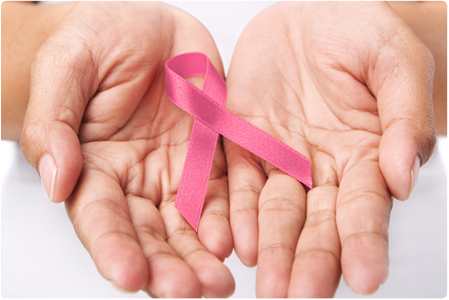
Warning Signs of Breast Cancer
What are The Guidelines on Breast Screening?
39 years and below |
|
40 to 49 years |
|
50 years and above |
|

What Is Biopsy?
To confirm breast cancer, a biopsy will have to be performed in which cells or a piece of tissue is removed for examination under a microscope.
Common biopsy techniques:
Stages / Extent of Spread
| Stages | Extent of Spread | Average 5-Year Survival Rate (%) | |
| 0 | Non invasive cancer | 99 | |
| I | Small invasive cancer | 90 | |
| II | Invasive cancer | 70 | |
| III | Large invasive cancer | 40 | |
| IV | Widespread or metastatic cancer | 20 |
In general, the larger the size of tumour the greater the chance of breast cancer reoccurring.
Histologic Grade: This refers to how much the tumour cells resemble normal cells when viewed under the microscope; the grading scale is 1 to 3. Grade 3 tumours contain rapidly growing cancer cells. The higher the histologic grade, the greater the chance of breast cancer relapsing.
The number of lymph nodes that is in the armpit, on the same side of the affected breast, is an important indicator. A higher number of positive nodes is associated with a worse outcome and warrants more aggressive treatments.
About two-thirds of all breast cancers contain significant levels of estrogen and/or progesterone receptors. They are referred to as estrogen receptor positive (ER+) tumours. ER-positive tumours tend to grow less aggressively and may respond favorably to treatment with hormones.
HER2 is a protein found on the surface of certain cancer cells. A tumour is described as being HER2-positive when it has a lot more HER2 receptors than others. About 20-25% of all breast cancers have tumours labelled HER2- positive. Tumours that are HER2-positive tend to grow more quickly than other types of breast cancer. By knowing if a cancer is HER2-positive can affect the choice of treatment because women with such tumour can benefit from anti Her2 targeted therapy.
Treatment options and prognosis (chance of recovery) depends on the stage of the cancer (whether it is in the breast only or has spread to other places in the body), the type of breast cancer, certain characteristics of the cancer cells and whether the cancer is found in the other breast. A woman’s age, menopausal status (whether a woman still has menstrual periods) and her general health can also affect treatment options and prognosis.
Most have surgery to remove the cancer. Forms of surgery include:
1. Breast – conserving surgery
2. Mastectomy – removal of the whole breast.
During both of the above breast surgeries, some of the lymph nodes under the same armpit will also be removed for examination.
Physical rehabilitation includes:
Mental rehabilitation involves:
Radiotherapy uses high-energy rays to target and kill cancer cells. The goal is to kill any cancer that might be left in or around the breast.
Radiotherapy is vital after a breast-conserving surgery like lumpectomy, since much of the breast tissue is left intact. It will lower the chances of the cancer returning in the breast.
Most women who have a mastectomy do not need radiotherapy. However, in some cases, it is used to treat the chest wall and the lymph nodes in the armpit, if the risk of local recurrence is determined to be high enough based on size and margin.
What is The Best Approach to Care?


CanHOPE provides:
The CanHOPE team will journey with patients to provide support and personalised care, as they strive to share a little hope with every person encountered.
By clicking ‘Subscribe’, I consent to Parkway Cancer Centre, its employees, representatives, agents and/or business partners, collecting, using and disclosing my personal data for the following purposes and understand that I may opt out of the subscription at any time:
Events updates and invitations
E – newsletter
Other marketing and promotional purposes
*Please read our Privacy Policy for information on how we manage your personal data.
By clicking ‘Subscribe’, I consent to Parkway Cancer Centre, its employees, representatives, agents and/or business partners, collecting, using and disclosing my personal data for the following purposes and understand that I may opt out of the subscription at any time:
Events updates and invitations
E – newsletter
Other marketing and promotional purposes
*Please read our Privacy Policy for information on how we manage your personal data.